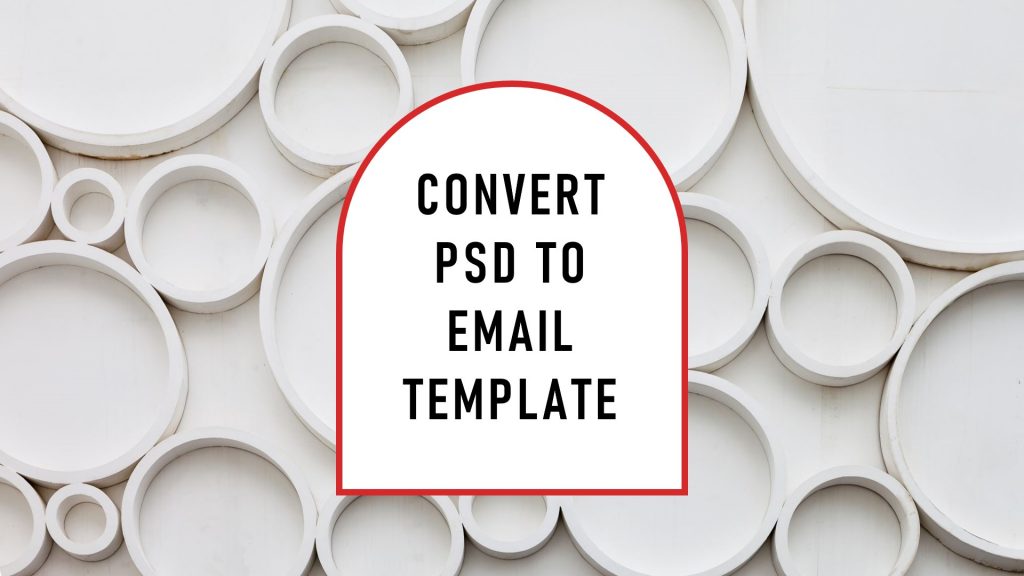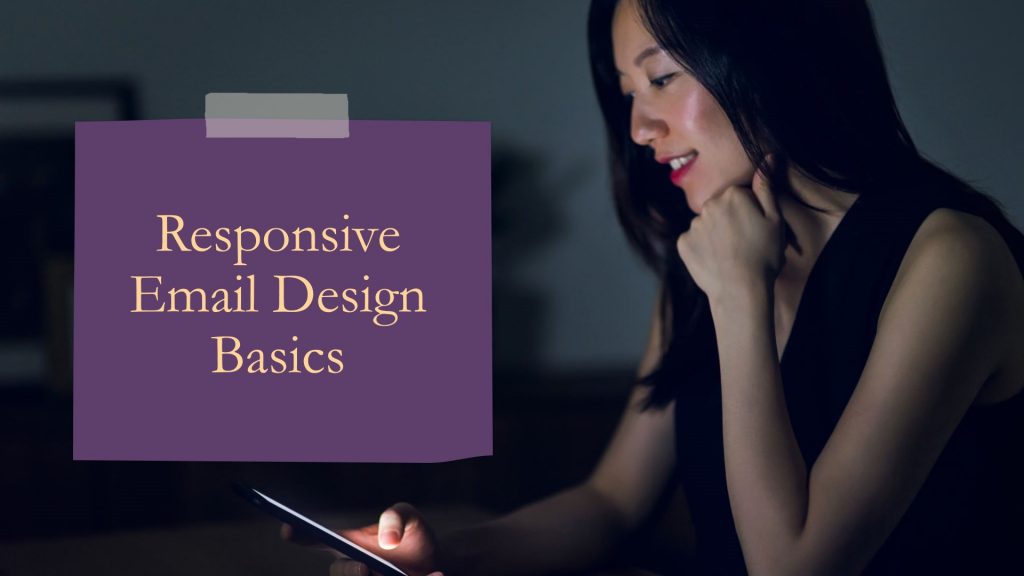PSD to Email Conversion: A Guide to Creating Email |Newsletter Designs

Note: This article is a comprehensive guide on PSD to Email Conversion, covering the importance, basics, advantages, requirements, steps, best practices, tools, resources, and benefits of using professional services. It also explores Figma to Email Conversion and custom design newsletter conversion.
Introduction to PSD to Email Conversion
As a web designer, I have always been fascinated by the potential of email marketing. It allows businesses to reach out to their audience directly, delivering personalized messages and driving conversions. However, creating visually appealing and responsive email designs can be a challenge. That’s where PSD to Email Conversion comes in.
Why is PSD to Email Conversion important?
PSD to Email Conversion is the process of transforming a design file in Photoshop (PSD) format into a fully functional and responsive email template. This conversion is essential because it ensures that your emails look great across different devices and email clients. By converting your PSD designs to HTML email templates, you can achieve consistency in branding, improve user experience, and maximize the effectiveness of your email marketing campaigns.
1. Excel-In your Product Demonstration
A compelling product demonstration is crucial to captivate customers’ interest right from the start and encourage them to make a purchase promptly. E-commerce entrepreneurs must prioritize this aspect to ensure success. PSD to HTML email templates conversion offers a solution to enhance their presentations.
Upon engaging a trustworthy service provider, their team of designers will create your email design in PSD format, which will then be transformed into HTML email templates. This process not only enhances the visual appeal of your email template but also boosts the chances of receiving responses from your intended audience.
2. Enhance your Brand Visibility
Utilizing email marketing is a highly efficient method to engage with customers and keep them updated on new offerings, services, and other important updates that businesses want to share with their target audience. This not only enhances the level of interaction between businesses and their clients, but also plays a crucial role in bolstering brand visibility.
3. Encourages Direct Engagement
The PSD to HTML Email / Newsletter conversion process enables the integration of interactive elements such as survey forms, CTA buttons, payment links, subscription requests, sponsorships, and social sharing requests, leading to enhanced brand visibility and customer reach.
4. Enables Focusing on a Specific Audience.
Intentionally crafted to set themselves apart from other clients, Emails are recognized and appreciated for their longevity. Tailored emails for a particular audience are hard to overlook. PSD to Email / Newsletter Conversion achieves the same goal by personalizing emails to enhance user engagement.
5. Rapid Response
Having your emails designed in Photoshop and then converted into email format will help users grasp the process, ensuring you receive the desired feedback. By receiving emails that appear genuine, professional, tailored to the audience, and equipped with user-friendly mobile features, users will be more inclined to open, read, and respond to them.
6. Seamlessly integrates with various web browsers
PSD converted HTML emails effortlessly blend with a variety of well-known browsers. This functionality ensures that users can receive and view emails exactly as intended.
Understanding the basics of Mobile-Friendly email design

Mobile-Friendly email design
In today’s mobile-centric world, it is crucial to design emails that are mobile-friendly. Mobile devices account for a significant portion of email opens, and if your emails don’t display properly on mobile screens, you risk losing your audience. When converting PSD to Newsletter, keep in mind the following best practices for mobile-friendly design:
- Use a single column layout to ensure readability on small screens.
- Optimize images for faster loading times.
- Use responsive design techniques, such as media queries, to adapt your email layout to different screen sizes.
- Test your email template on various mobile devices and email clients to ensure compatibility.
Advantages of HTML Template Over Email as an Image
While it may be tempting to design your emails as images and attach them to your messages, using HTML templates offers several advantages:
- Improved deliverability: HTML emails have a higher chance of reaching the recipient’s inbox compared to image-based emails, which may be flagged as spam.
- Accessibility: HTML emails allow for the use of alt text and semantic markup, making them more accessible to users who rely on screen readers.
- Dynamic content: With HTML templates, you can include dynamic content such as personalized greetings, live social media feeds, and interactive elements, enhancing the user experience.
- Better analytics: HTML emails provide valuable insights into open rates, click-through rates, and conversions, allowing you to measure the success of your campaigns.
Basic Requirements for an Email Layout in PSD Format
When designing an email layout in PSD format, there are a few basic requirements to keep in mind:
- Width: The recommended width for email templates is between 600 and 800 pixels to ensure compatibility across different devices and email clients.
- Slices: Divide your PSD design into slices for easier conversion. Each slice represents a separate element in the email template, such as the header, footer, or body.
- Fonts: Use web-safe fonts or include fallback fonts in case the recipient’s email client doesn’t support your chosen font.
- Images: Optimize images for web use by compressing them without compromising on quality. Consider using CSS background images instead of embedding images directly into the email template.
Steps to convert a PSD file to an email template
Converting a PSD file to an email template involves several steps. Here’s a simplified overview of the process:
- Slice and export: Slice your PSD design into individual images and export them for web use. This includes the header, footer, body, and any other elements.
- Code the structure: Create a basic HTML structure for your email template, including tables, rows, and cells. Use inline CSS to style the elements.
- Add images: Insert the sliced images into the appropriate sections of your HTML code. Use absolute URLs for image sources to ensure they display correctly in email clients.
- Style the email: Apply CSS styles to format the text, set the colors, adjust the spacing, and make the email visually appealing.
- Test and optimize: Test your email template on different devices, email clients, and screen sizes to ensure it displays correctly. Optimize the code for faster loading times and compatibility.
Best practices for PSD to Email Conversion
To ensure a smooth and successful PSD to Email Conversion, follow these best practices:
- Keep it simple: Avoid complex layouts and excessive use of images. Focus on clean, minimalist designs that are easy to read and navigate.
- Use inline CSS: Since many email clients strip out embedded stylesheets, it’s crucial to use inline CSS for your email templates.
- Test thoroughly: Test your email templates on various devices, email clients, and screen sizes to ensure they render correctly. Pay attention to how your templates appear in popular clients like Gmail, Outlook, and Apple Mail.
- Include a plain-text version: Provide a plain-text version of your email for recipients who prefer text-only emails or have email clients that don’t support HTML.
Tools and resources for PSD to Email Conversion
Converting PSD to Email can be made easier with the help of specialized tools and resources. Here are some popular options:
- XCHOP: XCHOP offers professional PSD to responsive email conversion services. Their experienced team can transform your PSD designs into pixel-perfect, table-based email templates that work across devices and email clients.
- Litmus: Litmus is a comprehensive email testing and analytics platform. It allows you to test your email templates on different devices and email clients, ensuring they render correctly.
- Mailchimp: Mailchimp provides a drag-and-drop email builder that simplifies the process of creating responsive email templates. It also offers testing and analytics features.
- HTML Email Boilerplate: HTML Email Boilerplate is a collection of code snippets and best practices for building HTML email templates. It provides a solid foundation for your PSD to Email Conversion projects.
Benefits of using a professional newsletter conversion service
While it’s possible to convert PSD to Email on your own, there are several benefits to using a professional newsletter conversion service:
- Expertise and experience: Professional services have a team of experts who specialize in email design and development. They understand the nuances of different email clients and can create templates that work seamlessly across devices.
- Time-saving: Outsourcing the conversion process frees up your time, allowing you to focus on other aspects of your business. Professionals can deliver high-quality email templates in a shorter timeframe.
- Quality assurance: Professional services ensure that your email templates are thoroughly tested and optimized for maximum compatibility and performance.
- Customization options: Professional services can tailor your email templates to match your brand identity and unique requirements. They can incorporate custom design elements and interactive features to make your emails stand out.
Figma to Email: Converting Figma designs to responsive emails
If you’re using Figma as your design tool, you can convert Figma designs to responsive emails using the following steps:
- Export assets: Export the individual elements of your Figma design as PNG or SVG files.
- Code the structure: Create an HTML structure for your email template, using tables and inline CSS.
- Insert images: Insert the exported assets into your HTML code, making sure to use absolute URLs for image sources.
- Style and optimize: Apply CSS styles to format the text, set the colors, and optimize the code for performance.
- Test and refine: Test your Figma to Email conversion on different devices and email clients, making adjustments as needed.
Custom design newsletter conversion: Taking your email designs to the next level
If you’re looking to take your email designs to the next level, consider custom design newsletter conversion. This involves creating unique, visually stunning email templates that reflect your brand identity and engage your audience. By working with a professional service, you can collaborate closely with designers and developers to bring your vision to life. Custom design newsletter conversion allows for greater creativity and flexibility, enabling you to create email templates that truly stand out from the crowd.
Conclusion: Mastering the art of PSD to Email Conversion
In conclusion, PSD to Email Conversion is a crucial skill for web designers and marketers alike. By following the steps outlined in this guide and adhering to best practices, you can create responsive and visually appealing email templates that drive engagement and conversions. Whether you choose to convert PSD to HTML email templates on your own or utilize professional services like XCHOP, the key is to prioritize mobile-friendly design, test rigorously, and optimize for performance. With the right tools, resources, and expertise, you can master the art of PSD to Email Conversion and elevate your email marketing efforts to new heights.
CTA: XCHOP PSD to responsive email conversion services / Newsletter templates design service. Our experienced team of emailer designing experts has hands-on experience to deliver the newsletter design as per the client or business requirements. We accept all design formats such as PNG, JPG, PDF, GIF, and etc designs and build the best email templates that are hand-coded, pixel perfect, and table-based markups. We develop email templates or newsletters with all devices and email clients. More info:https://www.xhtmlchop.com/psd-to-responsive-email-template.html
- Comments
- Leave a reply
